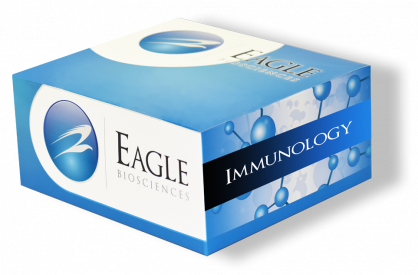Anti-Phospholipid Screen ELISA Kit
Anti-Phospholipid Screen ELISA Kit is for research use only.
Size: 1 × 96 wells
Sensitivity: 0.03 AU/mL for IgG; 0.16 AU/mL for IgM
Dynamic Range: 0 – 80 AU/ml
Incubation Time: 1 hour 45 minutes
Sample Type: Serum, Plasma
Sample Size: 10 µL
Alternative Names: Human Anti-Phospholipid Screen ELISA, Human Phospholipid Antibody Screen ELISA
Assay Background
The first study on the anti-phospholipid antibodies began in 1906 when Wasserman introduced a serological test for syphilis. In 1942 it was discovered that the active component is a phospholipid called Cardiolipin. In the 1950’s it was observed that a large number of people appeared to be positive for syphilis tests but did not show any evidence of disease. Initially the phenomenon was classified as a series of false positive syphilis tests, before a more accurate analysis revealed, for this group of patients, a high prevalence of autoimmune disorders including SLE and Sjögrens syndrome. The term lupus anticoagulant (LA), used for the first time in 1972, derived from experimental observations in which an increased risk of thrombosis was observed, paradoxically, with the presence of some anticoagulants factors; the term LA is not totally correct, in fact the disease is present more frequently in patients without lupus and it is associated with thrombosis rather than to abnormal bleeding.
Some years later the role of a cofactor was investigated, the β2-glycoprotein I (apolipoprotein H) also called β2GPI and its interactions with anionic phospholipids in human serum / plasma. This cofactor is a β-globulin with a molecular weight of 50 kDa that has a concentration of 200 μg / mL in plasma. The β2GPI is involved in the regulation of blood coagulation, inhibiting the intrinsic way. β2GPI in vivo is associated with negatively charged substances such as anionic phospholipids, heparin and lipoproteins.
The region that binds phospholipids is in its fifth domain. The acronym “aPL” (anti-phospholipid antibodies) indicates improperly antibodies directed against negatively charged phospholipids like Cardiolipin (CL), Phosphatidyl serine (PS) Phosphatidyl inositol (PI) and phosphatidic acid (PA); more correctly the term anti-phospholipid antibodies indicates those antibodies directed against the complex between β2GPI and anionic phospholipids that can bind to the fifth domain of β2GPI. Among these, the Cardiolipin is the most commonly used phospholipid as an antigen for determining the aPL by ELISA method.
Diagnostic laboratories measure the antibodies directed against the complex between β2GPI and negatively charged phospholipids, as Phosphatidyl serine (PS) Phosphatidyl inositol (PI) and phosphatidic acid (PA). Some researchers suggest the use of PS instead of Cardiolipin in ELISA assays, for a more precise diagnosis. However, these antibodies against phospholipids are less commonly used, even if their use may increase the clinical sensitivity of patient samples with suspected anti-phospholipid Syndrome (APS), but it can’ t replace the determination of autoantibodies anti-Cardiolipin.
Assay Principle
Anti Phospholipid Screen test is based on the binding of antibodies in human serum directed against the antigenic complex between anionic phospholipids (Cardiolipin, Phosphatidyl serine, Phosphatidyl inositol, Phosphatidic acid, Phosphatidyl choline, Lyso-phosphatidyl choline, Phosphatidyl ethanolamine) and β2-Glycoprotein; these complexes are coated on the microplate. Any antibody of IgG class or IgM class in calibrators, controls or prediluted patient samples binds to its respective antigen. After 60 minutes incubation, the microplate is washed with wash buffer for removing non-reactive serum components. An anti-human IgG conjugate solution (Conjugate IgG, reactive 4) or an anti-human IgM conjugate solution (Conjugate IgM, reactive 5) recognize IgG class or IgM class antibodies, respectively, bound to the immobilized antigens.
After a 30 minutes incubation any excess enzyme conjugate which is not specifically bound is washed away with the wash buffer. A chromogenic substrate solution containing TMB is then dispensed into the wells. After a 15 minutes incubation the color development is stopped by adding the stop solution. The solutions color change into yellow. The amount of color is directly proportional to the concentration of IgG or IgM antibodies present in the original sample. The concentration of IgG or IgM antibodies in the original sample is calculated through a calibration curve.
Related Products
DotDiver Anti‐Phospholipid IgM
DotDiver Anti‐Phospholipid IgG
Anti-Beta-2 GP-I Screen ELISA


